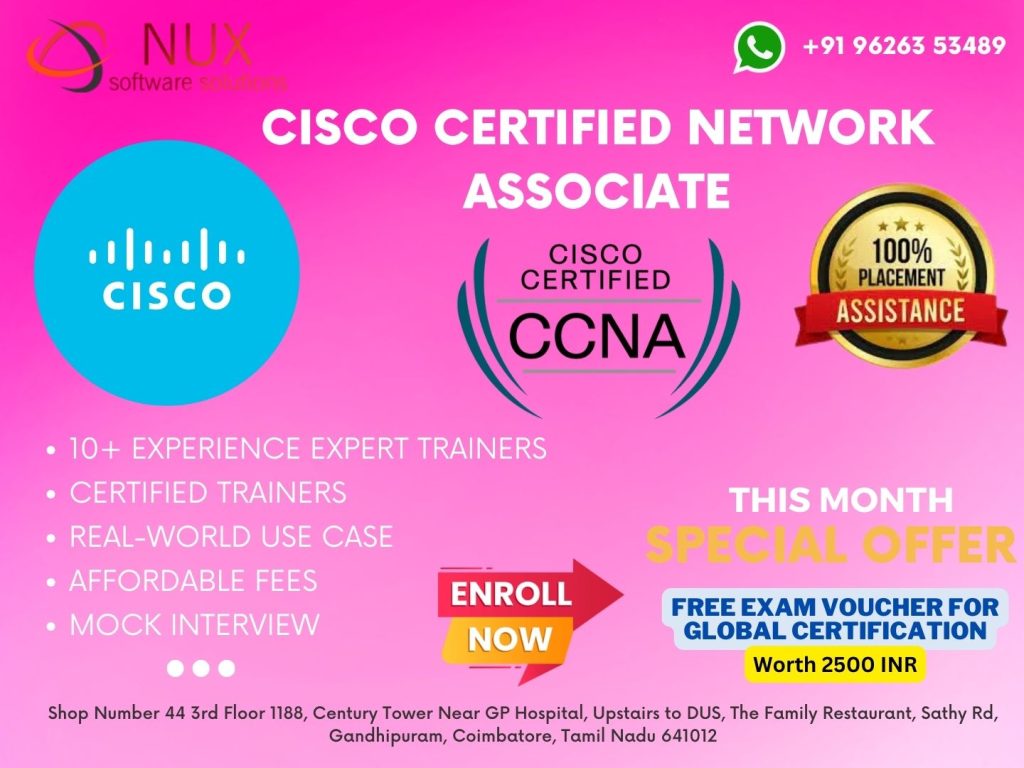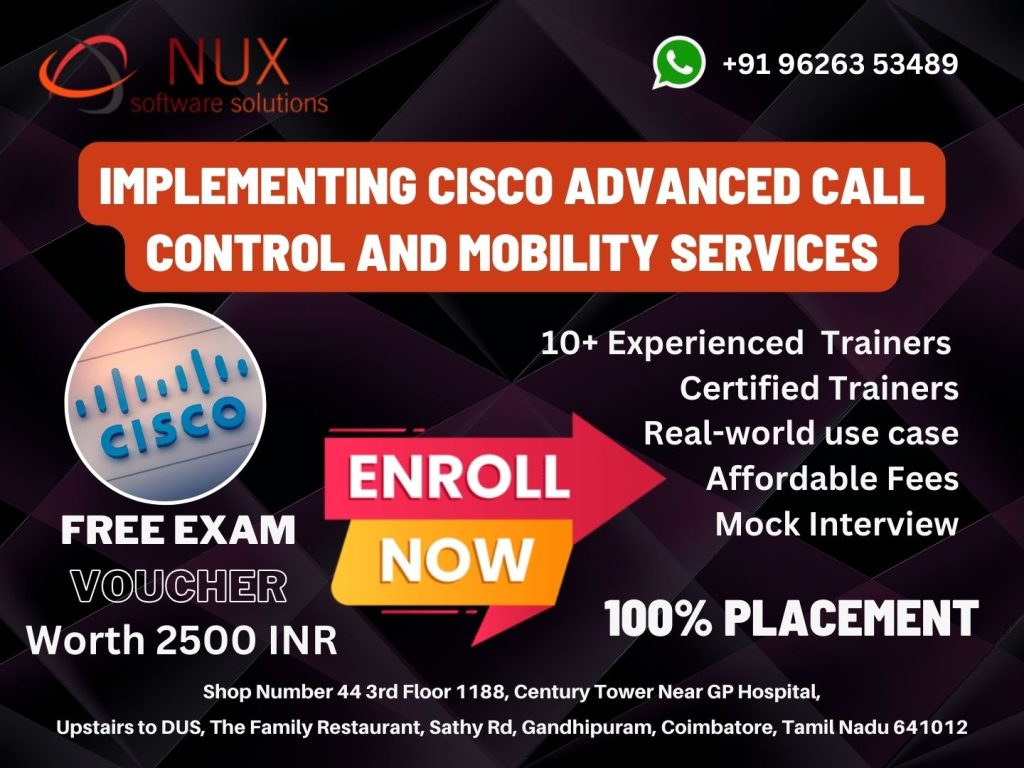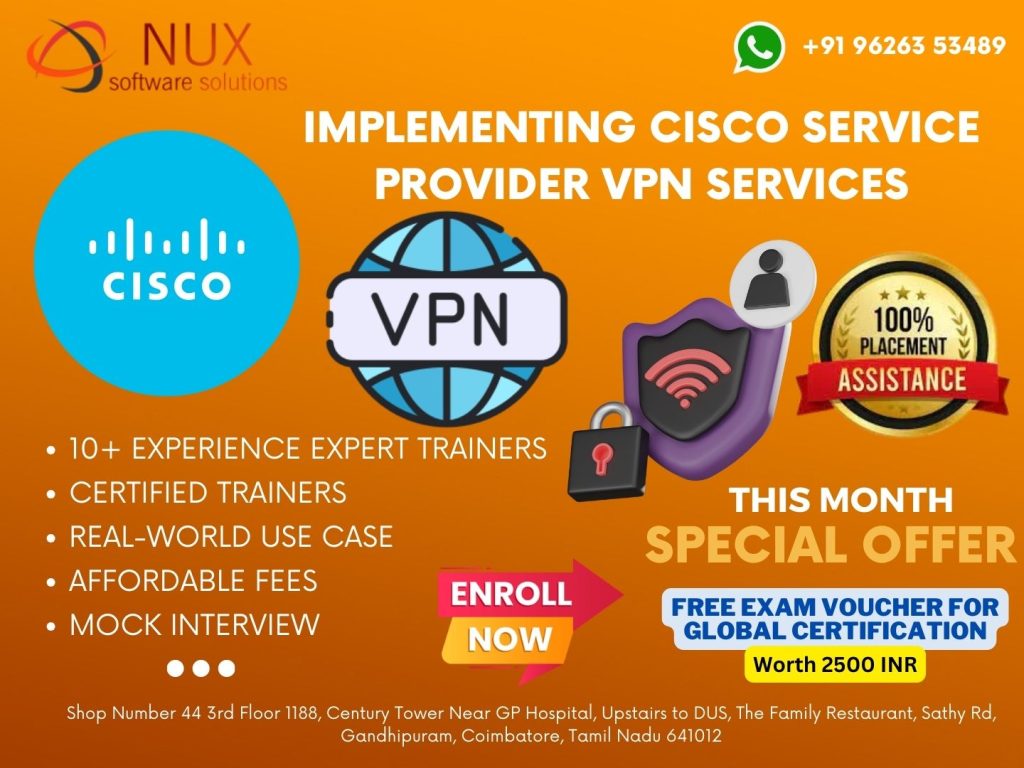Cisco Certified Design Expert (CCDE) Course

Cisco Certified Design Expert (CCDE) Training in Coimbatore
Course Overview
The Cisco Certified Design Expert (CCDE) is one of Cisco’s most prestigious and advanced-level certifications, focused exclusively on network infrastructure design at the expert level. Unlike certifications centered on device configuration and implementation, the CCDE validates a professional’s ability to design and architect complex enterprise-grade networks that are scalable, secure, and aligned with business goals.
At Linux Training Center in Coimbatore, our CCDE training is designed to prepare senior network professionals and architects to take on the strategic planning, high-level design, and decision-making responsibilities required in large enterprise environments.
This course provides deep insight into translating business and technical requirements into network solutions across infrastructure, services, security, and operational strategies.
Why Cisco CCDE?
In a world where network demands are rapidly evolving, having the ability to design resilient, optimized, and secure architectures is a rare and in-demand skill. The CCDE is Cisco’s top-tier certification for professionals focusing on network architecture and design strategy, rather than day-to-day configuration.
The CCDE demonstrates a mastery in handling real-world scenarios like mergers, technology transitions, security architecture planning, and scalable WAN design. It is vendor-agnostic in design philosophy, making it valuable even beyond Cisco deployments.
Who Should Enroll?
This course is intended for:
Senior Network Engineers or Architects
Network Designers and Pre-Sales Architects
Infrastructure Consultants and Systems Engineers
Professionals aiming to become technical decision-makers
Candidates preparing for the CCDE Written and Practical exams
Prior experience with enterprise networking technologies and architecture design is highly recommended.
What You Will Learn
High-level network design methodologies and best practices
Business impact analysis and translating requirements into technical architecture
Designing for scalability, security, and high availability
WAN and campus design, including routing protocol strategy (BGP, OSPF, EIGRP)
Service provider architecture and MPLS network design
VPN and security architecture within design context
Evaluating and selecting technologies (SD-WAN, data center fabric, cloud integration)
Network migration strategies and risk assessments
Design trade-offs, documentation, and stakeholder communication
This training emphasizes scenario-based thinking to simulate real-world architecture planning and executive-level communication.
Course Highlights
Complete alignment with the latest Cisco CCDE blueprint
Conducted by Cisco-certified network architects and design experts
Real-world case studies, enterprise design simulations, and whiteboard sessions
Designed to sharpen analytical thinking, business alignment, and critical decision-making
Classroom and 1-on-1 mentorship options available in Coimbatore or live online
Prepares for both the CCDE Written exam and Practical scenario-based exam
Career Opportunities
CCDE-certified professionals are highly valued by top global organizations and system integrators. Job roles include:
Lead Network Architect
Enterprise Infrastructure Consultant
Cloud & Hybrid Network Design Engineer
Solutions Architect (Network-focused)
Senior Technical Consultant
Strategic Network Planner
This certification also serves as a springboard for CCAr (Cisco Certified Architect), Cisco’s highest-level credential.
Why Choose Linux Training Center, Coimbatore?
Our CCDE training at Linux Training Center is built on years of mentoring experienced network professionals and helping them transition into design leadership roles. We combine expert-level knowledge delivery with business-aligned design practices. Whether you aim to become a consultant, an enterprise architect, or lead global projects, our training ensures you think beyond devices—like a true designer.
Cisco Certified Design Expert (CCDE) Syllabus
MODULE 1
Chapter 1
Describe fast convergence techniques and mechanisms, a) Down detection, b) Interface dampening
Chapter 2
Describe loop detection and mitigation protocols, a) Spanning tree types, b) Spanning tree tuning technique
Chapter 3
Describe mechanisms that are available for creating loop-free topologies, a) REP, b) Multipath, c) Switch clustering, d) Flex links
e) Loop detection and mitigation
Chapter 4
Describe the effect of transport mechanisms and their interaction with routing protocols over different types of links
Chapter 5
Describe multicast routing concepts
Chapter 6
Describe the effect of fault isolation and resiliency on network design, a) Fault isolation, b) Fate sharing, c) Redundancy, d) Virtualization, e) Segmentation
MODULE 2 : Layer 3 Control Plane
Chapter 1
Describe route aggregation concepts and techniques, a) Purpose of route aggregation, b) When to leak routes / avoid suboptimal routing, c) Determine aggregation location and techniques
Chapter 2
Describe the theory and application of network topology layering, a) Layers and their purposes in various environments
Chapter 3
Describe the theory and application of network topology abstraction, a) Purpose of link state topology summarization, b) Use of link state topology summarization
Chapter 4
Describe the effect of fault isolation and resiliency on network design or network reliability, a) Fault isolation, b) Fate sharing
c) Redundancy
Chapter 5
Describe metric-based traffic flow and modification, a) Metrics to modify traffic flow, b) Third-party next hop
Chapter 6
Describe fast convergence techniques and mechanisms, a) Protocol timers, b) Loop-free alternates
Chapter 7
Describe factors affecting convergence, a) Recursion, b) Microloops, c) Transport
Chapter 8
Describe unicast routing protocol operation [OSPF, EIGRP, ISIS, BGP, and RIP] in relation to network design, a) Neighbor relationships, b) Loop-free paths, c) Flooding domains and stubs, d) iBGP scalability
Chapter 9
Analyze operational costs and complexity, a) Routing policy, b) Redistribution methods
Chapter 10
Describe the interaction between routing protocols and topologies
Chapter 11
Describe generic routing and addressing concepts, a) Policy-based routing, b) NAT, c) Subnetting, d) RIB-FIB relationships
Chapter 12
Describe multicast routing concepts, a) General multicast concepts, b) Source specific, c) MSDP/anycast, d) PIM, e) mVPN
Chapter 13
Describe IPv6 concepts and operation, a) General IPv6 concepts, b) IPv6 security, c) IPv6 transition techniques
MODULE 3 : Network Virtualization
Chapter 1
Describe Layer 2 and Layer 3 tunnelling technologies, a) Tunnelling for security, b) Tunnelling for network extension, c) Tunnelling for resiliency, d) Tunnelling for protocol integration, e) Tunnelling for traffic optimization
Chapter 2
Analyze the implementation of tunnelling, a) Tunnelling technology selection, b) Tunnelling endpoint selection, c) Tunnelling parameter optimization of end-user applications, d) Effects of tunnelling on routing, e) Routing protocol selection and tuning for tunnels
MODULE 4 : Design Considerations
Chapter 1
Analyze various QoS performance metrics, a) Application requirements, b) Performance metrics
Chapter 2
Describe types of QoS techniques, a) Classification and marking, b) Shaping, c) Policing, d) Queuing
Chapter 3
Identify QoS strategies based on customer requirements, a) DiffServ, b) IntServ
Chapter 4
Identify network management requirements
Chapter 5
Identify network application reporting requirements
Chapter 6
Describe technologies, tools, and protocols that are used for network management
Chapter 7
Describe the reference models and processes that are used in network management, such as FCAPS, ITIL®, and TOGAF
Chapter 8
Describe best practices for protecting network infrastructure, a) Secure administrative access, b) Control plane protection
Chapter 9
Describe best practices for protecting network services, a) Deep packet inspection, b) Data plane protection
Chapter 10
Describe tools and technologies for identity management
Chapter 11
Describe tools and technologies for IEEE 802.11 wireless deployment
Chapter 12
Describe tools and technologies for optical deployment
Chapter 13
Describe tools and technologies for SAN fabric deployment
MODULE 5 : Evolving Technologies v1.1
Chapter 1 Cloud
a) Compare and contrast public, private, hybrid, and multicloud design considerations
[i] Infrastructure, platform, and software as a service (XaaS)
[ii] Performance, scalability, and high availability
[iii] Security implications, compliance, and policy
[iv] Workload migration
b) Describe cloud infrastructure and operations
[i] Compute virtualization (containers and virtual machines)
[ii] Connectivity (virtual switches, SD-WAN and SD-Access)
[iii] Virtualization functions (NFVi, VNF, and L4/L6)
[iv] Automation and orchestration tools (CloudCenter, Cisco DNA-center, and Kubernetes)
Chapter 2 Network programmability (SDN)
a) Describe architectural and operational considerations for a programmable network
[i] Data models and structures (YANG, JSON and XML)
[ii] Controller based network design (policy driven configuration and northbound/ southbound APIs)
[iii] Configuration management tools (agent and agentless) and version control systems (Git and SVN)
[iv] Device programmability (gRPC, NETCONF and RESTCONF)
Chapter 3 Internet of things (IoT)
a) Describe architectural framework and deployment considerations for IoT
[i] IoT technology stack
(IoT Network Hierarchy, data acquisition and flow)
[ii] IoT standards and protocols
(characteristics within IT and OT environment)
[iii] IoT security
(network segmentation, device profiling, and secure remote)



